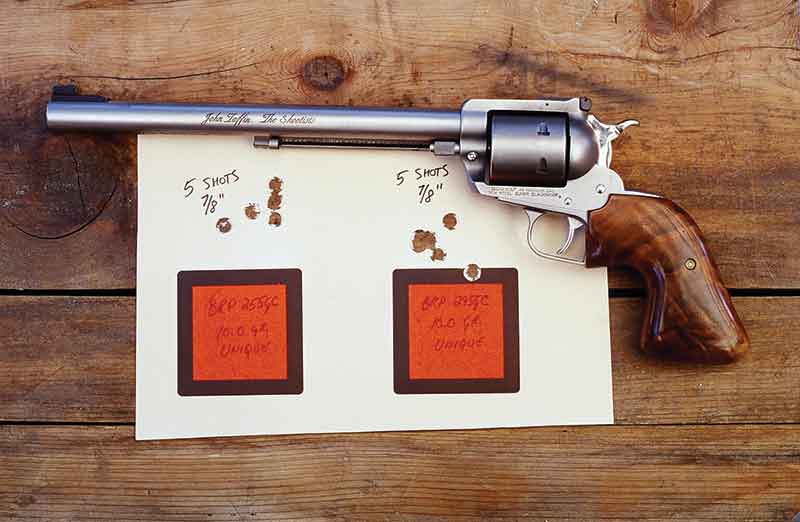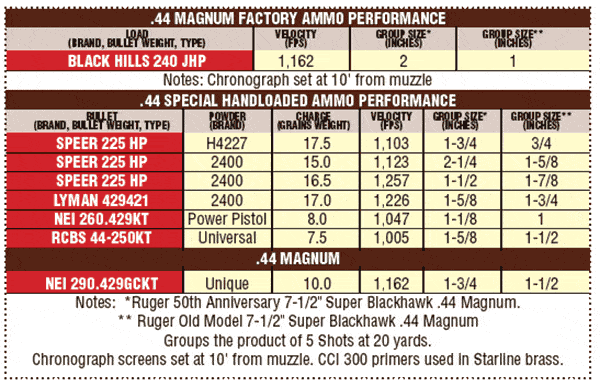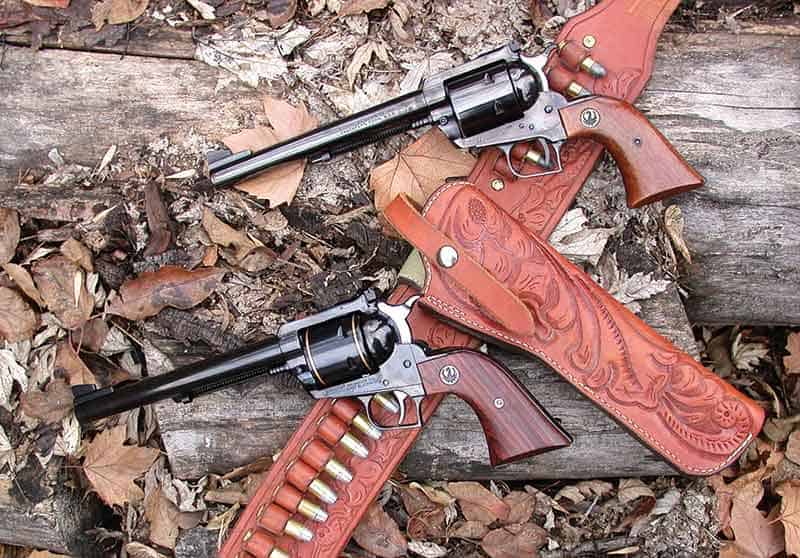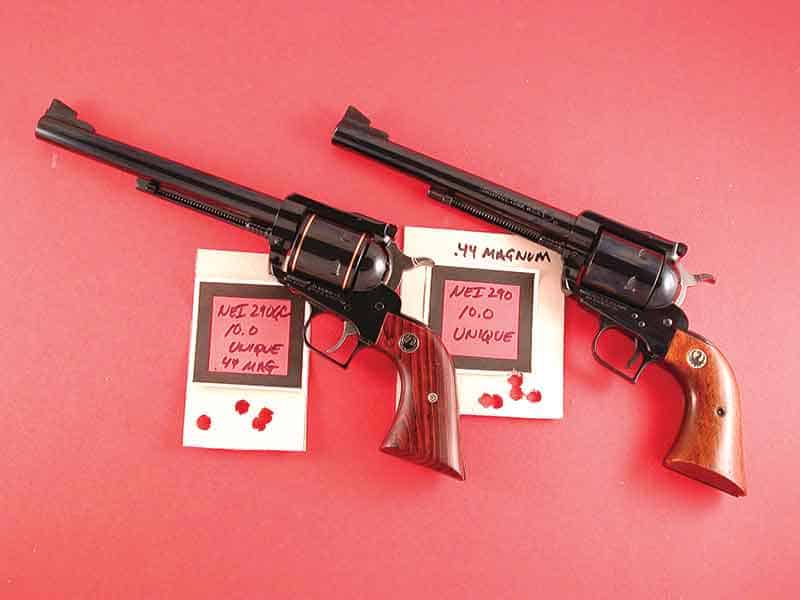Month: February 2023


Some people are just born cursed. While there are those whose lives seem inexplicably blessed with prosperity, comfort, and peace, others can be destined for squalor, chaos, and pain. Call it karma, luck, providence, or fate, it is tough to comprehend from our limited perspective why life is the way it is.

Why do some reprehensible people die in their late 80’s after a long life of debauchery and self-abuse while some saint succumbs in their teens to cancer? In medicine, you sometimes get fatalistic about it. The sweet little grandmother strikes her head and strokes out, while the unkillable thug catches half a dozen rounds in a drug deal gone bad and leaves the hospital under his own steam the next day. Someday God will explain such stuff to me face-to-face in a way I will understand. Until then, I haven’t a clue.
A Most Unusual Tale

In the peculiarly tragic life of Yang Kyoungjong, we see the curious power of fate at work. According to an interview by the esteemed historian Stephen Ambrose, there were at least four ethnic Asians captured by American forces in the opening days of the D-Day invasion. These troops purportedly did not speak German and were wearing Wehrmacht uniforms. One of these men has been identified as a Korean named Yang Kyoungjong.

Before we proceed, appreciate that there is controversy surrounding this story. It was related as fact for years and was even used in an online advertisement for a real estate company in St. John’s, Newfoundland. In 2011 Yang’s story formed the basis for a South Korean movie titled My Way. However, documentary filmmakers in Korea have researched the story and subsequently cast some doubt on its veracity. Regardless, the narrative is nonetheless both compelling and plausible. Try to just enjoy the ride.

Born in Korea on March 3, 1920, Yang was a conscript in the Kwantung Army in Manchuria. Operating between 1919 and 1945, the Kwantung Army was the most prestigious command in the IJA (Imperial Japanese Army). While the Kwantung Army saw a great many battlefield successes, they were also responsible for some of the war’s most egregious atrocities. Among these was the infamous Unit 731 which performed biological warfare experiments on both captured civilians and prisoners of war.

Manpower was always a critical component of any WW2 military campaign. The United States enjoyed vast resources of both men and raw materials for military production. The British drew from across the Commonwealth. The Germans, Japanese, and Russians harvested meat wherever it could be found and threw a uniform on it. This resulted in some peculiar loyalties.

Yang Kyoungjong was first press-ganged into service in 1938 at age 18. The following year he was captured by Red Army troops during the Battle of Khalkhin-Gol and remanded to a forced labor camp. By 1942 the Soviet Union was in dire straits and faced the very real probability of national extinction at the hands of the Nazis. This drove Russian commanders to some desperate places.

When you’re packed into a prison camp alongside several thousand of your mates subsisting on sawdust bread and whatever rats you can catch, most anything seems like an improvement. When the desperate Russians came looking for cannon fodder, Yang either volunteered or didn’t resist unduly. Either way, he soon found himself in a Soviet greatcoat fighting under the red banner for Mother Russia and Marxism.

In 1943, Yang found himself in Ukraine at the Battle of Kharkov. The Battle of Kharkov was actually four distinct battles spanning nearly two years. The first began in October of 1941 when the Germans captured the city. The last took place in late summer 1943 when the Soviets finally won it back for good. It was the Third Battle of Kharkov in February of 1943 that saw Yang captured by the Germans.

By now the tide was turning against the Nazis, and they were beginning to sense the mess they had gotten themselves into. With war raging on three fronts, the German High Command began harvesting the dregs for manpower. Where previously service in the Wehrmacht and Waffen SS might have been a prestigious thing that was both selective and competitive, by this point in the war if you could stand and hold a rifle you met the entrance standards. As a result, Yang Kyoungjong found himself wearing field gray in an Ost-Bataillone.

These scratch units went by several titles. Osttruppen, Osteinheiten, and Ostlegionen all meant similar things. With piles of bored and starving Soviet conscripts languishing in prison camps, the Germans enlisted those they felt might be ideologically malleable into these ad hoc support units. Results were predictably mixed.
Absolute Power Corrupts Absolutely

Josef Stalin was a turd. He was a relatively small man at 5 foot 5 inches tall. He was also ugly. A severe bout with smallpox as a child left him badly scarred. Stalin was directly responsible for the deaths of between 20 and 40 million people. This makes Josef Stalin one of the most prolific mass murderers in human history.

Stalin ruthlessly enforced a weird sense of justice. To be captured by the enemy in battle was frequently viewed as being tantamount to cowardice or even treason. A great many captured Soviet soldiers faced harsh imprisonment or execution upon repatriation. As a result, while most soldiers like Yang had little use for Naziism, they did find service in an Ost-bataillone preferable to the alternative.

Ost-Bataillones were battalion-sized units comprised of a mixture of volunteers and conscripts who were most typically posted in support roles away from the front-line fighting. This allowed the Germans to use their own troops for more serious work. The Ostlegionen were larger formations that were usually ethnically similar and comprised of multiple battalions. One of the roles for which the Germans used these foreign units was as defensive troops in fixed fortifications in fairly quiet places. In early June 1944, that is what brought Yang Kyoungjong to the placid beaches of Normandy, France.
Capture

Operation Overlord was the most extensive amphibious invasion in human history. Given advances in intelligence, logistics, and military technology it is highly unlikely that this performance will ever be repeated on such a grandiose scale. One of the more revolutionary aspects of the invasion was the widespread use of airborne forces.

The Germans really pioneered the widespread use of paratroops. The airborne assault on Crete in 1941 was ultimately successful but only at a fearsome cost. Hitler refused to authorize any further large-scale use of parachute forces in their intended role as a result. German fallschirmjagers were subsequently used as elite light infantry for the rest of the war. The Allies, however, aggressively developed the concept of airborne vertical envelopment.

Most of the 13,000 Allied paratroopers dropped on D-Day did not accomplish their specific assigned tactical objectives. Intense ground fire and chaos among the lift aircraft ensured that units were spread randomly and piecemeal across the Norman countryside. However, once these aggressive, highly-trained airborne warriors touched down they proceeded to sow chaos among German combat and support units wherever they found them.

One of these American paratroopers was LT Robert Brewer of the 506th Parachute Infantry Regiment, 101st Airborne Division. According to the Stephen Ambrose interview, Yang was one of four Asians in Wehrmacht uniforms LT Brewer and his men captured in the immediate aftermath of the D-Day invasion. At the time it was presumed that the four were Japanese. It was later determined that Yang’s three companions were from Turkestan. Yang was processed and sent across the channel to a POW camp in Britain. From there he was further removed to a camp in the US.
The American Dream

The American South was dotted with such camps during and immediately after the war. My family and I lived in Clinton, Mississippi, while I was in medical school. The POW camp outside Clinton had long since been transformed into a sweeping grassy park, but it still retained fields of daffodils planted and cultivated by the 3,000 German and Italian POWs who were held there during the war. Most of the Clinton prisoners were members of the Afrika Korps captured in North Africa early in the war. There is a small contingent of graves in the Jackson, Mississippi, cemetery occupied by German troops who perished in captivity.

Yang Kyoungjong was finally released from captivity in 1947. After such a violent and circuitous trek across all those Asian and European battlefields, Yang was purportedly none too keen to return to the nation of his birth. By the time of his release, he had already been away from home for nearly a decade.

Yang purportedly opted to remain in the United States after his release. He is said to have settled in Evanston, Illinois. He died there in April of 1992 at the age of 72.
Ruminations

It is easy to lose the trees for the forest when it comes to the study of war. I have a rabid addiction to military history books myself. My home sags under the weight of such. This is where I find much of the inspiration for our efforts here. My perennial challenge is finding tales of the individual soldier.

Book shops are dirty with tomes about Generals and campaigns. Memoirs about the movement of armies have occupied many a retired General officer in his waning years. However, what fascinates me are the tales of the regular private soldier. The humble dogface is the single entity who does most of the suffering and, in so doing, wins the wars his political leaders craft for him. In the curious tale of Yang Kyoungjong, we find the story of a normal guy caught up in some decidedly abnormal circumstances. I for one hope hope his life was ultimately warm and fulfilling.
That wonderful year was 1959. Ike was in the White House, Hawaii and Alaska became states, and Charlton Heston won Best Actor for Ben Hur, which was also chosen for Best Film. Sports fans watched the Colts beat the Giants for the NFL championship and in the World Series the Dodgers beat the White Sox. Walt Disney’s Mickey Mouse Club went off the air, a young actor by the name of Clint Eastwood arrived as Rowdy Yates in the TV series Rawhide, and for Western fans Saturday night television was ruled by Paladin and Matt Dillon.
It was 6-degrees below zero on a February morning when this then young teenager and an even younger teenager now known as Diamond Dot crossed over the state line in a 1954 Chevy to be married. Yes, 1959 is definitely a year to be remembered.
Both the original .357 and .44 Magnum Blackhawks are now known to collectors as Flat-Tops. In many parts of the country Ruger’s .44 Magnum arrived on dealer shelves even before the Smith & Wesson .44 Magnum. A group of us teenagers, I was 17 at the time, used to gather every Saturday afternoon at Boyle’s Gun Shop or Shell’s Gun and Archery Farm to shoot. Both establishments had outdoor ranges and when one is young weather makes no difference, so we shot almost every week. Shell’s received an early 4″ Smith & Wesson .44 Magnum and he rented it out along with six rounds of ammunition. Each one of us shot it in turn. The recoil was awful, however we all lied and said it wasn’t bad; after all, teenagers are supposed to be invincible.
That experience was not easy to forget so when the first Ruger .44 Blackhawk arrived I bought it instead of a Smith. It sold for $96 and I still have it more than a half-century later. It started as a standard 6-1/2″ Blackhawk, was soon cut to an easier carrying 4-5/8″ length, and then returned to the factory for a 7-1/2″ barrel when I needed the shorter length for a custom .44 Special Ruger. When his Esteemed Editorship pinned me to the wall several years back and forced me to pick my one favorite sixgun, it was this old Ruger. It was an easy choice.
The first time I shot that Ruger Blackhawk I found I had an even bigger and more ferocious tiger by the tail than that .44 Magnum Smith & Wesson. The experts at the time all seemed to think the Ruger would handle recoil better than the Smith as the grip frame was identical to the Colt Single Action Army, known for gently rocking in the hand under recoil. The problem was there was nothing gentle about the .44 Magnum. When I touched off that first round the .44 Ruger Blackhawk rotated more than 90-degrees backwards and the hammer dug a piece of skin out of the back of my hand. I went back to shooting the .44 Special and .45 Colt.
Eventually with more shooting experience I learned to handle both the S&W and Ruger .44 Magnums. However, my experience with the Ruger was apparently quite widespread and Ruger sought to alleviate the problem. The result in 1959 was the Ruger Super Blackhawk, with several changes. To add more weight the barrel was standardized at 7-1/2″ instead of the 6-1/2″, the cylinder was unfluted, and the grip frame was changed from aluminum alloy to a larger one of heavier steel.
To come up with the Super Blackhawk grip frame, Bill Ruger reached way back to the 1847 Colt Walker and Dragoon sixguns. These grip frames are not only longer than the original .44 Blackhawk grip, they also used a square-back triggerguard. Ruger also added a wide, checkered hammer spur and wide, grooved trigger to complete the package which was finished in a high polished bright blue. The original run of Super Blackhawks were packed in wooden boxes and sold for $120. When the boxes were no longer available the price was dropped to $116 at a time when the Smith & Wesson .44 Magnum was selling for $140.
I purchased my first Ruger Super Blackhawk in 1965 and still have it. I’ve carried it over many miles of Idaho’s sagebrush, foothills, forests and mountains, however I found I preferred the standard .44 Blackhawk with its smaller grip frame and which had been re-barreled to 7-1/2″. The Super Blackhawk was sent off to Larry Kelly at Mag-na-port for total customizing. The barrel was Mag-na-ported and cut back even with the ejector rod housing, the action was totally tuned, and the entire sixgun was finished in M-N-P’s satin nickel.
I have since replaced the Super Blackhawk grip frame with one from a stainless steel Ruger Old Army and also fitted Eagle’s Ultra-ivory grips. Most shooters find the Super Blackhawk grip quite comfortable, but the square back triggerguard raises havoc with my knuckle. This custom Super is now a major candidate for the title of Perfect Packin’ Pistol. I mostly use it with 260-grain Keith bullets over 10.0 grains of Unique or Universal for about 1,150 fps. This is a powerful load yet still kind to the shooter.
The original Ruger Super Blackhawk was only offered as an all blue, 7-1/2″ .44 Magnum. Today this Super Blackhawk is known to collectors as the Old Model or 3-Screw. It did not immediately replace the standard .44 Blackhawk and both were available until 1963. When Ruger switched from the Flat-Top configuration to the Blackhawk now known as the Old Model, 3-Screw with wings on both sides of the rear sight, the standard .44 Blackhawk was dropped from production. New Model Rugers are easily recognized by two things; the three screws on the side of the frame were replaced by two pins and the trigger sits much farther forward in the triggerguard.

Before Ruger introduced the New Model with a long barrel Taffin had this custom
satin nickel Super Blackhawk made by Trapper Gun. The scope is by Bushnell and
the stocks, Herrett’s Single Action Trooper model, solved Taffin’s problem of being
bitten by the square backed triggerguard of the Super Blackhawk.
Ruger’s New Model added a transfer bar safety allowing single actions to be safely carried hammer down with all chambers loaded under normal conditions. Traditional single action sixguns are loaded and unloaded by placing the hammer on half-cock, opening the loading gate, and rotating the cylinder; with the New Model action there is no half-cock notch on the hammer and simply opening the loading gate allows the cylinder to be rotated while the hammer remains in a down position.
With the coming of the New Model Blackhawks, the Super Blackhawk 7-1/2″ remained standard, however a longer 10-1/2″ barrel was soon offered for hunters and silhouetters. Both of these were all blue but were soon sided by stainless steel versions.
For nearly 30 years no factory produced short-barreled Super Blackhawks were available. This was corrected when the 5-1/2″ barrel length came along in 1987 and finally in 1994 both blued and stainless 4-5/8″ Packin’ Pistols in .44 Magnum were introduced. The shorter barreled versions are not easily recognized as Super Blackhawks as they are fitted with standard grip frames rather than the longer, square-backed Dragoon-style frames of the other Super Blackhawk barrel lengths.
In the late 1970s and early 1980s Diamond Dot and I were both competing in Long Range Silhouetting and, since we did not see sights the same way, I ordered a pair of 10-1/2″ Super Blackhawks so we could both easily keep track of our sight settings. For a secure grip during competition both were also equipped with Pachmayr rubber grips. By the time the Super Blackhawk arrived in stainless, we were no longer competing and I also found I had the most accurate Ruger .44 Magnum I had ever experienced. With its interchangeable post front sight, I found I shot it very well with iron sights and have used it for hunting, taking a record book Aoudad. With its long barrel and black sights I can still shoot this sixgun as well as any I own.
Ruger also offers the Hunter Model Super Blackhawk in stainless steel with a 7-1/2″ heavy ribbed barrel with cutouts to accept Ruger scope rings. It is offered with either the Bisley or Super Blackhawk grip frame with a rounded triggerguard. Without a doubt the Hunter Model Super Blackhawk is the greatest bargain offered today for handgun hunters.
Over the past 50 years I would guess the Ruger Super Blackhawk has been chosen by more handgun hunters and outdoorsmen than any other sixgun. Happy 50th Birthday and Golden Anniversary to Bill Ruger’s grand offering. Unless everything unravels in this country, and it certainly could, I expect 50 years from now these pages will contain the Centennial Salute to the Super Blackhawk.
The Ruger Super Blackhawk of 1959 gained immediate acceptance with shooters and especially handgun hunters. Commemorating that prestigious event of 50 years ago Ruger produced the 50th Anniversary Super Blackhawk for 2009. The Anniversary Model, except for the New Model transfer bar action, is the same basic .44 Magnum of 1959. The barrel length is 7-1/2″, the finish is bright blue, and the grips, instead of the original walnut, are a most attractive Cocobolo complete with a black eagle emblem and beautifully fitted to the frame.
It is obvious Ruger spent extra time on this model not only with fit and finish but also the fact that all cylinder chamber throats are a perfect and uniform .431″, the barrel/cylinder gap is .003″, and the trigger pull is set at 3-3/4 pounds. This Anniversary Model is also embellished with two gold bands around the cylinder as well as “50th ANNIVERSARY SUPER BLACKHAWK 2009” in gold lettering on the top of the barrel. All in all this is one of the nicest, perhaps the best crafted sixgun to ever come from the Ruger factory. Shooting this new Ruger Blackhawk was pure pleasure and also brought back many memories over the past half-century as I ran it alongside my nearly 50-year-old original Super Blackhawk.
Handgun: 50th Anniversary Super Blackhawk
Maker: Sturm Ruger
200 Ruger Road, Prescott, AZ 86301
www.ruger.com
Action Type: Single Action
Caliber: .44 Magnum
Capacity: 6
Barrel Length: 7-1/2″
Overall Length: 13-1/2″
Weight: 48 ounces
Finish: High gloss blue
Sights: Ruger adjustable rear,
ramp front
Grips: Cocobolo
Price: $880







